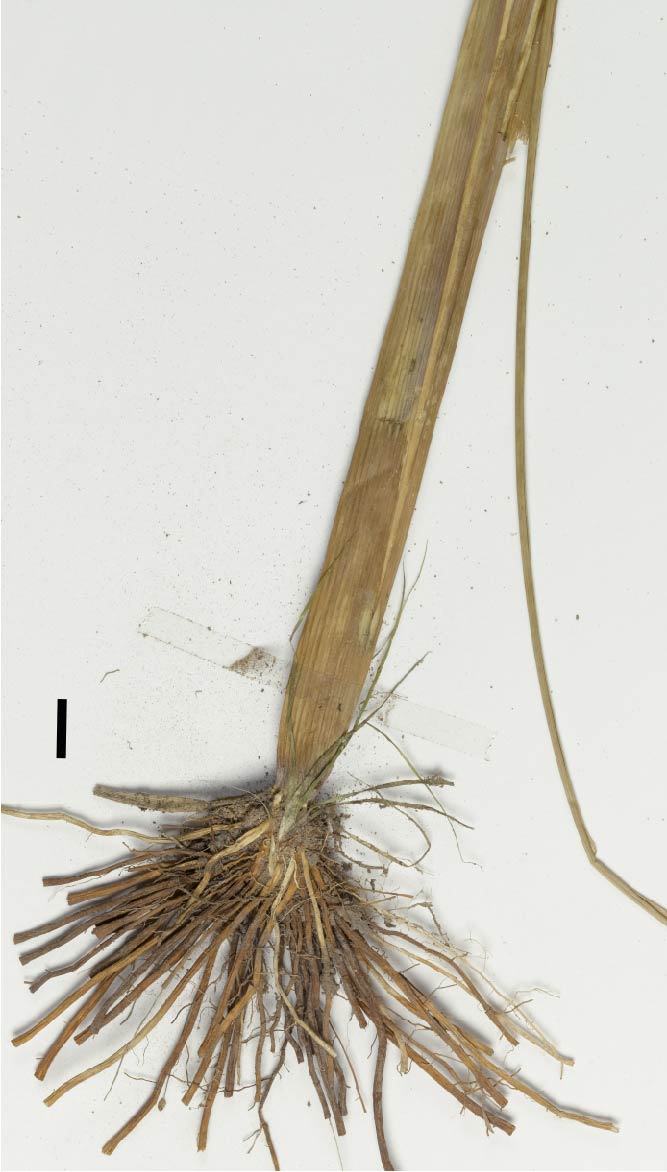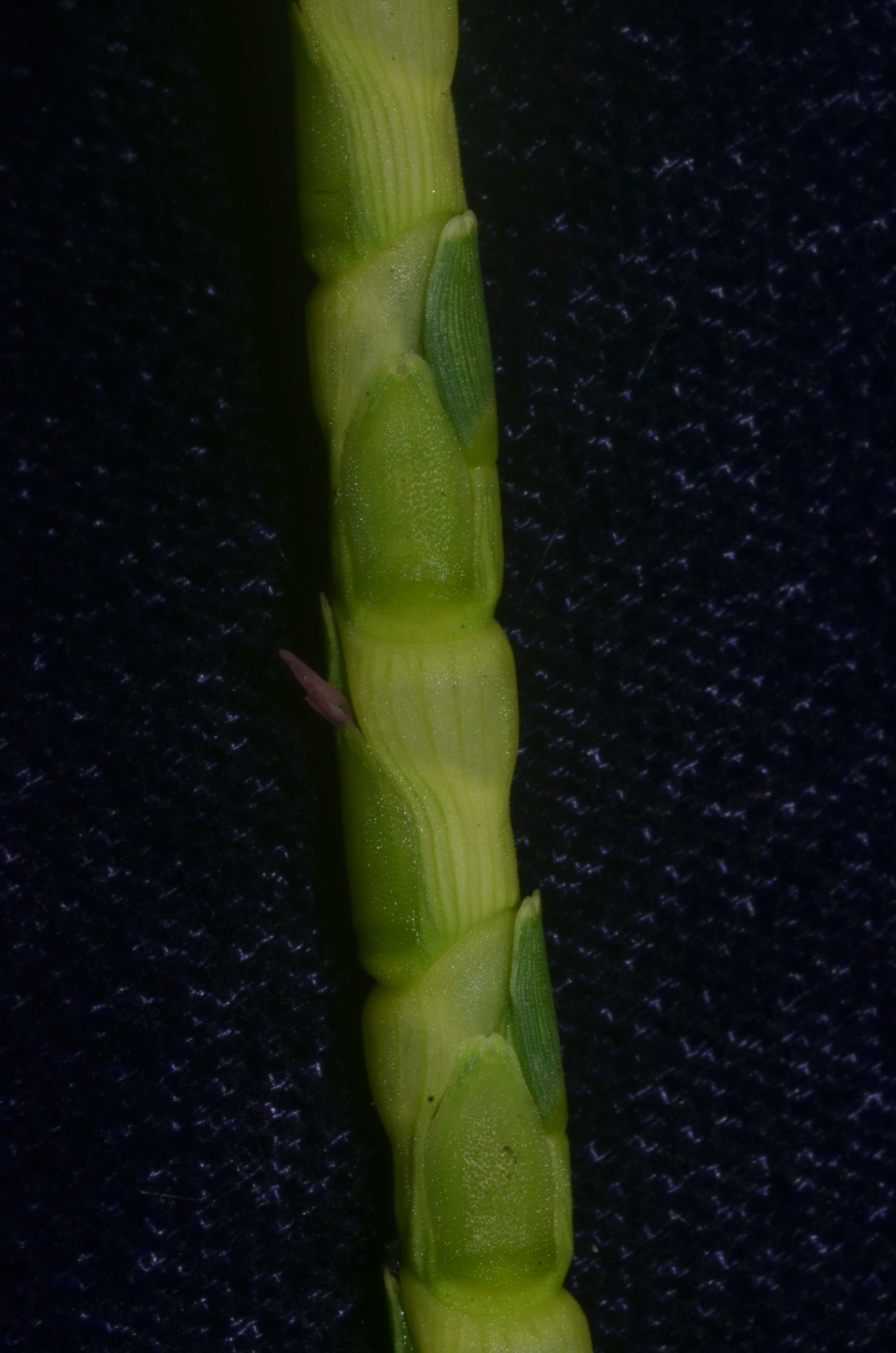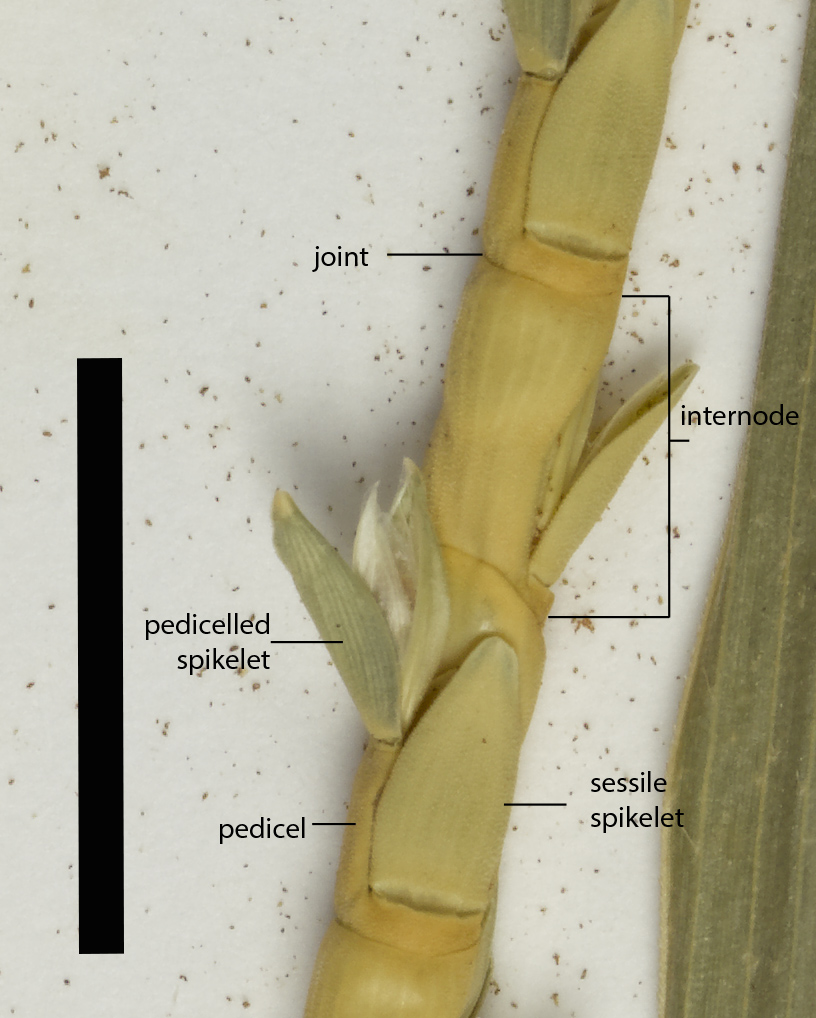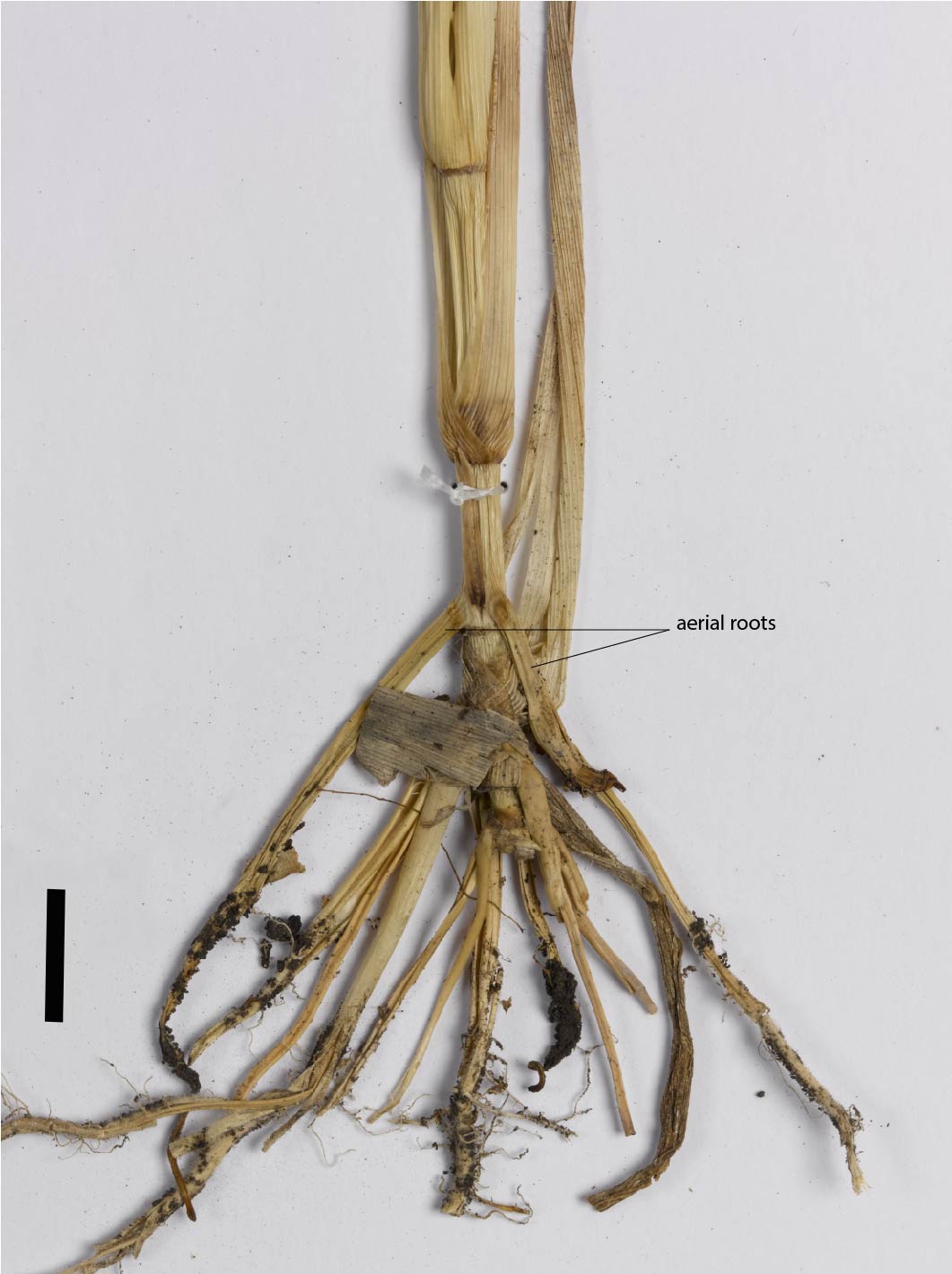Rottboellia cochinchinensis
(Lour.) Clayton.
Itch Grass
This grass is an erect tall annual up to 300 cm high, the leaves are broad (up to 30 mm wide) and arranged along the flowering stem or culm (Fig. 1). The basic flowering units or spikelets are arranged in a spike up to 15 cm long and 3 mm diameter (Fig. 2). The spike has a jointed or segmented cylindrical appearance, with spikelets arranged in pairs along each segment (Figs. 3a & b). At maturity the segments separate at the joints.
Botanical Description
A tall annual grass with culms up to 300 cm high; frequently with aerial prop roots (Fig. 4). The leaves are cauline (arising along the stem of the plant), with leaf blades from 15 to 50 cm long and 5 to 30 mm wide, and a leaf surface that is rough to the touch. The leaf sheath (that part of the leaf which clasps the main stem) often has siliceous needle like hairs that can penetrate and irritate the skin (Fig. 5) (CABI 2017). The inflorescence or flowering branch is a solid, cylindrical, jointed raceme or spike to 15 cm long and is fragile at the nodes. Spikes are often solitary or in clusters of usually 3 to 4 spikes, arising from leaf axils along the stem and at the apex. The spikelets are paired in each segment of the spike, each pair consisting of one fertile stalkless spikelet and one sterile stalked spikelet (Fig. 3b). The spikelets are embedded into a recess of the thickened stem (or internode) of each segment, giving the young inflorescence a straight sided appearance. When mature or dry the spikelets are exserted from the stem margin and have the appearance of alternating open hatches along the stem (Fig. 3b). The tip of the flowering branch or inflorescence are generally sterile
Diagnostic Features
This species is often a very tall, single stemmed to few stemmed, erect annual, with wide leaves and sharp itchy hairs along the leaf sheath. When flowering it is easily identified by the thick, jointed flowering spike, often terminating the culm or stem. Spikelets are more or less embedded into the internode or stem of each segment of the flowering spike.
This species is quite distinct and is unlikely to be confused with other grass species when flowering. Other species which have superficially similar jointed inflorescences are Chionachne cyathopoda, Mnesithea rottboellioides and Ophiuros exaltatus. Chionachne cyathopoda (River Grass) can be distinguished by the arrangement of spikelets along the flowering stem. The lower half of the Chionachne flowering spike consists of female spikelets only, the female spikelets are solitary and rather than the segments consisting of spikelets embedded in the thickened internode the female spikelets in Chionachne obscure the internode and the spikelets appear joined end to end (Figs. 6a & b). Mnesithea rottboellioides (Figs. 7a & b) and Ophiuros exaltatus (Figs. 8a & b). can be distinguished by the absence of sharp irritating hairs along the leaf sheath and the presence of more compound inflorescences with usually 6 or 7 spikes or racemes in a cluster subtended by a spathe and sometimes more than one cluster per inflorescence. They also have narrower spikes, between 1.5-2 mm in diameter compared to 3 mm in R. cochinchinesis. If not flowering M. rottboellioides can be identified by the tufted perennial habit and O. exaltatus by the narrow leaf blades only up to 15 mm wide.
Natural Values
This species is considered introduced in Queensland. It is widely distributed throughout the tropical regions of the world and is considered an aggressive invasive species in many countries (CABI 2017).
Habitat
In Australia this species is found in Cape York Peninsula, tropical Qld and the Top End of the Northern Territory with a few collections recorded from central and Southern Queensland. Usually found growing as a weed in wet sites.




Resources
AVH (2017) Australia’s Virtual Herbarium, Council of Heads of Australasian Herbaria, <http://avh.chah.org.au>, accessed 30 May 2017.
CABI (2017) Rottboellia cochinchinensis [original text by Charlie Riches]. In: Invasive Species Compendium. Wallingford, UK: CAB International. www.cabi.org/isc.
Cowie, I. D. & Short, Philip S. & Osterkamp Madsen, Monika (2000) Floodplain flora: a flora of the coastal floodplains of the Northern Territory, Australia. Flora of Australia Supplementary Series Number 10. Australian Biological Resources Study: Canberra.
Lazarides, M. (2002) Economic attributes of Australian grasses. Flora of Australia 43: 213-245.
Simon, B.K. & Alfonso, Y. (2011) AusGrass2, http://ausgrass2.myspecies.info/ accessed on [date 29 March 2017].

